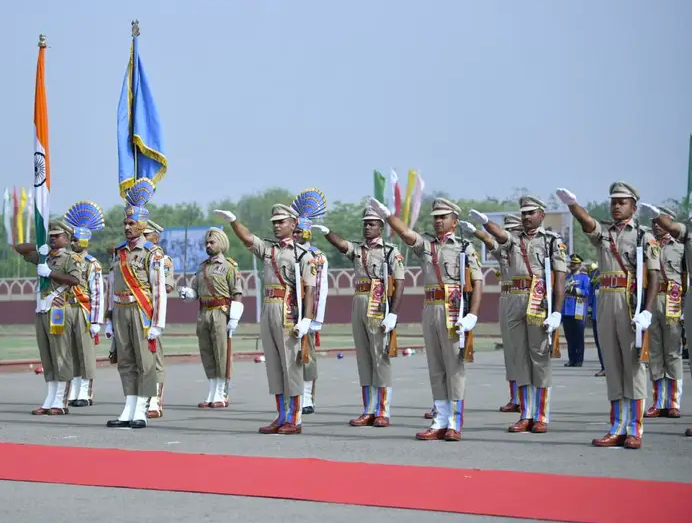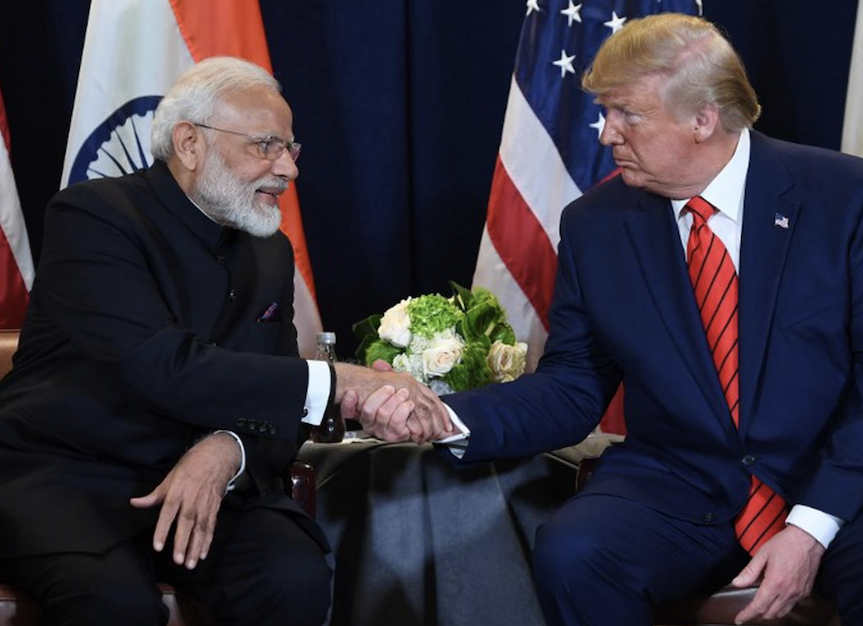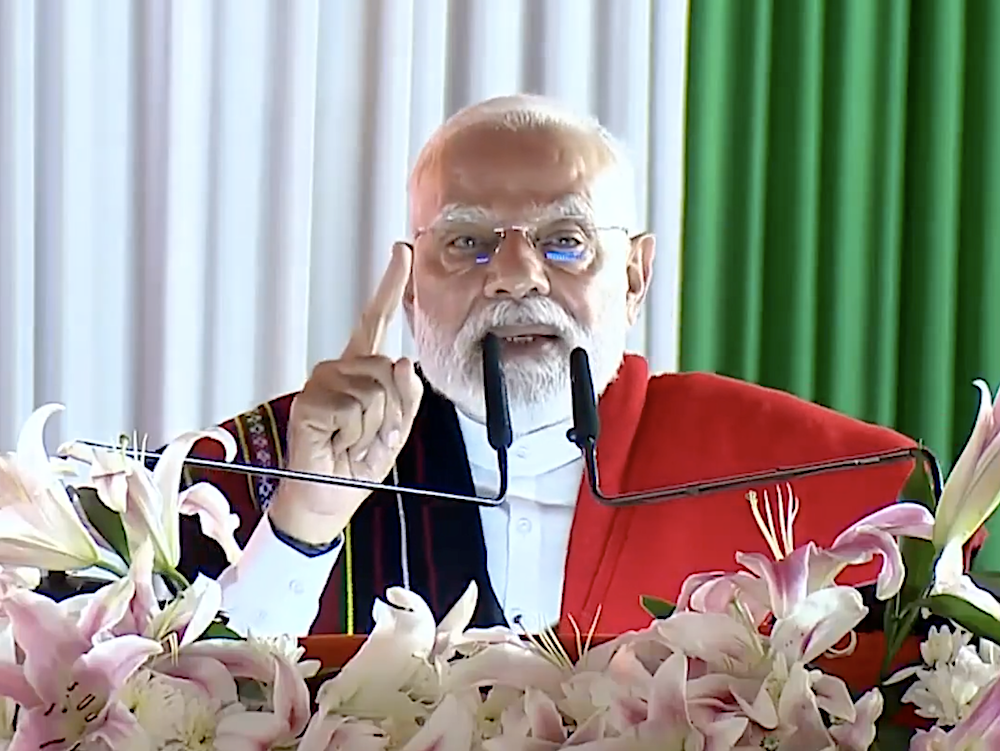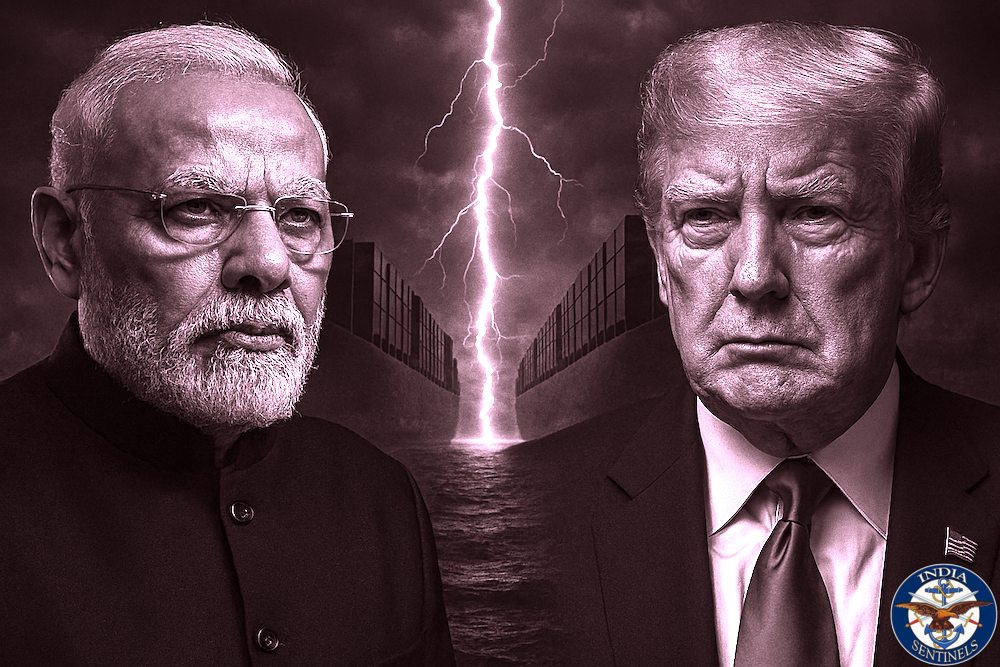 India Sentinels illustration for representation. (©India Sentinels 2025)
India Sentinels illustration for representation. (©India Sentinels 2025)
The recent elevation of Pakistan’s army chief, General Syed Asim Munir Ahmed Shah, to the rank of field marshal represents far more than ceremonial recognition, as this author had discussed in his previous article here. This promotion makes him only the second military officer in Pakistan’s history to hold the title, and signals Islamabad’s calculated preparation for a strategic deception that could drag India into a catastrophic full-scale war.
As a military veteran who has observed Pakistan’s tactical evolution over decades, particularly its deepening alliance with China and lessons learned from recent conflicts, this author believes we are witnessing the orchestration of a sophisticated trap. Pakistan, having gauged Indian capabilities during Operation Sindoor and building upon the experience gained from 2019’s Operation Swift Retort, is now positioning itself to engineer a “black swan” event through its proxies designed to provoke India beyond the point of strategic restraint.
With Chinese military technology flowing freely and Munir wielding unprecedented authority over war and peace, India faces its most dangerous strategic challenge since 1971.
Read also: India mustn’t take Munir’s promotion to field marshal lightly
Pakistan’s Recalibration with Chinese Support
Pakistan’s military establishment has demonstrated a remarkable capacity for learning from tactical defeats, and Operation Sindoor provided invaluable intelligence about Indian air-power capabilities and defensive vulnerabilities. The conflict exposed critical gaps in Pakistan’s early-warning systems, with reports indicating that Indian strikes degraded 20–30% of Pakistan’s radar capabilities, including the destruction of a Saab 2000 Erieye airborne early-warning aircraft.
However, rather than viewing this as a strategic setback, Pakistan appears to be treating it as a costly but necessary intelligence-gathering exercise. The confrontation between Chinese and western weapons systems during the May 2025 conflict provided Beijing with unprecedented real-world data about the performance of its military exports.
Pakistan is a crucial customer for Chinese weapons exports, with 63% of China’s arms exports going to Pakistan between 2020 and 2024. According to defence analysts, the engagement represented “a testing ground for opposing weapons in a contemporary, real-world conflict,” with Chinese-made equipment demonstrating surprising effectiveness despite export limitations. A J-10C fighter using a PL-15E missile reportedly shot down an Indian Rafale, although both sides remain reticent about acknowledging losses.
China’s commitment to Pakistan extends far beyond arms sales – it represents a strategic partnership designed to maintain pressure on India’s western flank. According to a Stockholm International Peace Research Institute report, China supplied 81% of Pakistan’s total arms imports between 2020 and 2024, including advanced fighter jets, naval vessels, submarines, and missile systems.
The co-production of the JF-17 fighter jet has created technological transfer mechanisms that extend beyond mere equipment purchases. The failure of Chinese HQ-9 systems to intercept Indian missiles during Operation Sindoor has accelerated rather than deterred this partnership. Chinese military advisers are reportedly working directly with Pakistani engineers to address identified vulnerabilities, focusing particularly on integrated air-defence systems and electronic-warfare capabilities. This technical collaboration extends to cyberwarfare, where China’s advanced units are sharing methodology with Pakistani intelligence services.
Read also: Was Op Sindoor ceasefire premature? Analysing its strategic impact
The Field Marshal’s Unprecedented Mandate
General Asim Munir’s elevation to field marshal represents a fundamental shift in Pakistan’s decision-making architecture, concentrating unprecedented authority in the hands of a single military commander. Legislation passed in October 2024 allows for a second five-year term, while his current tenure has been extended until November 2027.
This promotion signals the civilian government’s complete abdication of defence-policy formulation. Unlike previous Pakistani army chiefs who operated within institutional constraints and required civilian approval for major military operations, Field Marshal Munir now possesses the formal authority to initiate military actions independently. This represents a dangerous departure from the traditional civil-military balance that, however tenuous, previously provided some check on military adventurism.
Historical precedent suggests that Pakistani military leaders with enhanced authority often feel compelled to justify their elevation through dramatic military action. Field Marshal Ayub Khan’s rise preceded the 1965 war, while General Pervez Musharraf’s consolidation of power led directly to the Kargil conflict. Munir’s new status creates similar pressures, particularly given the perceived tactical success of Pakistani forces during the recent conflict despite strategic losses.
The field marshal title also provides Munir with enhanced credibility among Pakistan’s military establishment and jihadist networks. Terror groups operating from Pakistani soil now view him as having the authority to provide strategic direction for asymmetric warfare against India. This enhanced stature makes him a more effective coordinator of what Pakistani strategists term “hybrid warfare” – the seamless integration of conventional military capabilities with terrorist operations.
Recent statements by Munir underscore this confrontational approach. Just days after his promotion, he declared that Pakistan will never accept India’s hegemony in the region, while positioning water resources as Pakistan’s “red line” and making accusations about Indian backing for terrorism in Balochistan.
Read also: Understanding Pakistan’s ‘deep state’ and its threat to world
India’s New Doctrine Lowered the War Threshold
Prime Minister Narendra Modi’s declaration following Operation Sindoor represents a fundamental shift in India’s strategic doctrine, which effectively lowers the threshold for full-scale military engagement with Pakistan. In his address to the nation, Modi stated that any terror attack on Indian soil suspected of Pakistani backing would be considered “an act of war” [by Pakistan on India].
This represents a dramatic departure from India’s previous policy of strategic restraint and graduated response. The new doctrine eliminates the ambiguity that previously allowed Pakistan to maintain plausible deniability for terror attacks while avoiding full-scale military retaliation.
By explicitly linking terror incidents to state-level military response, India has created a hair-trigger mechanism that Pakistan can exploit to its advantage. This doctrinal shift, while demonstrating resolve, has inadvertently provided Pakistan with a roadmap for escalation control and essentially handed Islamabad the initiative in determining when and how the next conflict will begin.
This lowered threshold creates what military strategists call “escalation entrapment” – a situation where a nation’s own doctrinal commitments force it into conflicts at times and circumstances not of its choosing. Pakistan’s terror networks can now calculate with precision the type and scale of attack required to trigger automatic Indian military response, allowing them to choose the battlefield and timing of engagement.
Read also: China’s covert military support to Pakistan emerges as major concern for India
The ‘Black Swan’ Strategy
Pakistan’s strategy for luring India into a devastating war centres on orchestrating a “black swan” event – an attack of such magnitude and psychological impact that it would collapse India’s capacity for strategic restraint and force immediate, large-scale military retaliation. Based on intelligence patterns and Pakistani strategic thinking, several catastrophic scenarios emerge as likely targets.
The most probable scenario involves a coordinated multi-city attack targeting India’s financial and technological centres, particularly Mumbai, Bengaluru, Hyderabad, and Delhi. Unlike the 2008 Mumbai attacks, which were limited in scope and duration, a future assault would likely involve simultaneous strikes across multiple cities using sophisticated weaponry and cyberwarfare components.
Pakistani planners have studied the economic disruption caused by 26/11 and would seek to amplify this effect exponentially. A particularly insidious possibility involves targeting India’s technology sector, which has become central to national identity and economic growth. Coordinated attacks on major IT campuses in Bengaluru, Hyderabad, and Pune could potentially kill thousands of young professionals while simultaneously damaging India’s international reputation and economic prospects.
Religious sites represent another high-value target category, with attacks designed to inflame communal tensions and create internal instability alongside external pressure. Simultaneous attacks on major temples during festival periods could cause mass casualties while creating the domestic chaos that Pakistani strategists believe would force India into hasty military decisions.
Critical infrastructure targets offer another avenue for maximum-impact attacks. Coordinated strikes on sensitive sites, such as nuclear facilities, major airports, or the Delhi Metro system, could create cascading effects far beyond immediate casualties. The psychological impact of demonstrating vulnerability in supposedly secure facilities would be immense.
WMD Threat
Perhaps most concerningly, Pakistani terror networks may attempt to acquire and deploy radiological dispersal devices or other weapons of mass destruction. While a nuclear device remains beyond their capabilities, a “dirty bomb” using radioactive elements from civilian sources, like medical equipment or laboratory experiment devices, remains a possibility.
Similarly concerning is the potential use of chemical weapons, as demonstrated by the 1995 Tokyo subway sarin-gas attack.
Read also: Pahalgam is a wake-up call to shed myopic view on J&K proxy war
India’s Achilles’ Heel: Vulnerable Borders
India’s vast and diverse geography presents numerous infiltration routes that Pakistani terror networks can exploit to execute large-scale attacks. The most concerning vulnerabilities span both traditional pathways and emerging security gaps that have developed due to rapid urbanization and technological advancement.
The Kashmir border remains the most obvious infiltration route, despite enhanced security measures. Pakistani terrorists continue to exploit the challenging terrain along the line of control (LoC), with countless evidence showing Pakistani army personnel directly guiding infiltrators to crossing points.
Recent images from Kotli and surrounding areas in Pakistan-occupied Kashmir demonstrate ongoing collaboration between Pakistani military units and terrorist groups, with the Pakistani army’s Special Service Group commandos personally showing infiltration routes to armed men for carrying out terror and/or militant attacks inside India.
Pakistan’s so-called Border Action Team or BAT are small units that often have serving or veteran SSG commandos along with highly trained militants that carry out subversive and violent acts inside Indian territory after infiltrating from Pakistan-occupied Kashmir (POK).
India’s western coastline presents equally serious vulnerabilities, particularly given the precedent of the 2008 Mumbai attacks. Despite the enhanced coastal security in place today, the 7,516-kilometre coastline remains impossible to monitor completely.
Pakistani naval special forces and terror groups have demonstrated sophisticated maritime infiltration capabilities – and the presence of Chinese submarines in the Arabian Sea adds another dimension to this threat.
Read also: India must move earnestly and quickly to settle border dispute with China
Neglected Eastern Approaches
The Bangladesh border represents perhaps the most overlooked vulnerability in India’s security architecture. The 4,096-kilometre frontier, much of it unfenced and poorly monitored, provides numerous crossing points for infiltrators. Pakistani intelligence services have historically used Bangladesh as a staging ground for operations in eastern India, and recent political developments in Dhaka may be facilitating renewed cooperation.
The open border with Nepal creates another significant vulnerability.
Read also: How India must handle the Bangladesh challenge in northeast
Emerging Technological Threats
Air infiltration represents an emerging threat vector as small drones and ultralight aircraft become even more accessible. India’s air-defence network, while robust against conventional aircraft, has gaps in low-altitude coverage that could be exploited.
Financial and communication networks present additional infiltration pathways, with Pakistani intelligence services becoming increasingly sophisticated in exploiting India’s digital banking and communication infrastructure.
What India Must Do Now
Preventing Pakistan’s “black swan” strategy requires immediate implementation of comprehensive security measures across multiple domains. India must move beyond reactive security postures to proactive threat disruption while maintaining the strategic restraint necessary to avoid falling into Pakistan’s trap.
Intelligence fusion represents the most critical immediate requirement. India must establish joint intelligence centres that integrate inputs from all agencies while focusing specifically on Pakistani terror planning. Although India has the Multi-Agency Centre (MAC), formed in December 2001 following the Kargil war, it remains a work in progress even after almost a quarter of a century. (How did Pahalgam happen?)
These centres should employ artificial intelligence broadly and machine learning specifically to identify patterns in communications intercepts, financial transactions, and movement data that might indicate preparation for large-scale attacks. The integration of satellite imagery analysis, social media monitoring, and financial intelligence could provide early warning indicators of impending attacks.
Read also: Robust HUMINT network is the key to defeat militancy in J&K
Preparing for the Long Game
Even if Pakistan’s immediate plans for a catastrophic terror strike fail, Field Marshal Munir’s strategic ambitions will not diminish. His promotion represents a long-term commitment to confrontation with India, backed by China’s strategic interests in maintaining pressure on India’s western flank.
India must therefore prepare for sustained hybrid warfare that combines conventional military threats with asymmetric terror operations over the coming decades. The institutional changes reflected in Munir’s elevation suggest that Pakistan has abandoned any pretence of seeking normalization with India in favour of permanent confrontation.
This reality requires India to develop corresponding institutional mechanisms for long-term strategic competition. India must establish dedicated strategic planning cells focused specifically on Pakistani threat assessment and response, integrating military, intelligence, diplomatic, and economic instruments of national power.
China’s role as Pakistan’s primary military supplier and strategic partner means that India faces not just Pakistani hostility but a coordinated challenge from the China-Pakistan axis. Indian strategic planning must account for this reality, developing capabilities to simultaneously deter Chinese aggression while defending against Pakistani-sponsored terrorism.
The dual challenge requires unprecedented coordination between India’s military services and intelligence agencies. The development of joint doctrine and integrated capabilities that can address both conventional and asymmetric threats simultaneously is essential. Traditional distinctions between peace and war, military and civilian targets, and state and non-state actors are becoming increasingly meaningless in the face of Pakistani strategy.
India must develop doctrines and capabilities that can respond effectively to this blurred threat environment while maintaining escalation control. This includes the development of legal frameworks that allow for rapid response to hybrid threats while maintaining democratic oversight and accountability.
Read also: India must consolidate its western front to tame Pakistan
Going Forward
Ultimately, preventing Field Marshal Munir’s trap requires India to demonstrate that strategic patience and careful preparation trump military adventurism. However, India must also upgrade its military capabilities on literally a war footing to effectively fight new-generation warfare.
This must be enabled by AI, multidomain synergy and synchronization of ground forces, aerial and space-based military assets, potent cyber- and electronic-warfare capabilities, and a robust, well-equipped foreign and domestic intelligence network that delivers useful and precise information. By strengthening defences, enhancing intelligence capabilities, and maintaining international partnerships, India can deny Pakistan the spectacular provocation it seeks while gradually shifting the regional balance of power in India’s favour.
The path forward requires India to be simultaneously stronger and more restrained than ever before – building the capabilities to deter and defeat any Pakistani aggression while maintaining the strategic wisdom to avoid the trap that has been so carefully laid. This delicate balance between strength and restraint will define India’s security challenges for the decade ahead.
Disclaimer: The views expressed in the article are the author’s own and don’t necessarily reflect the views of India Sentinels.
Follow us on social media for quick updates, new photos, videos, and more.
Twitter: https://twitter.com/indiasentinels
Facebook: https://facebook.com/indiasentinels
Instagram: https://instagram.com/indiasentinels
YouTube: https://youtube.com/indiasentinels
© India Sentinels 2025-26










